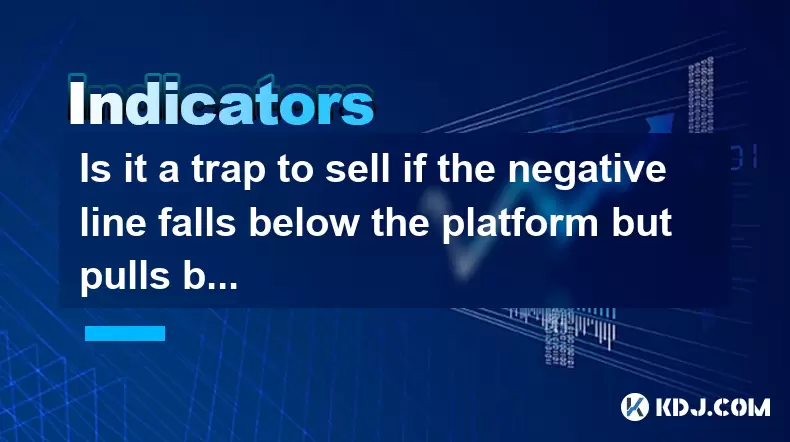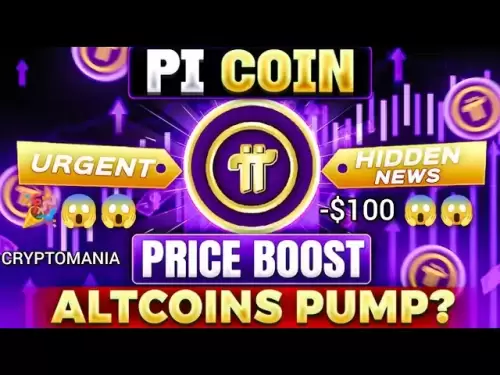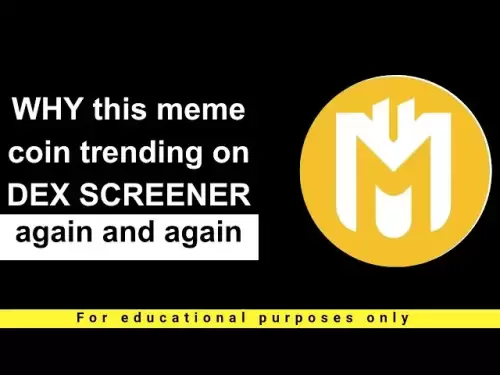-
 Bitcoin
Bitcoin $109,507.9823
0.43% -
 Ethereum
Ethereum $2,716.0274
3.79% -
 Tether USDt
Tether USDt $1.0003
-0.01% -
 XRP
XRP $2.3859
3.05% -
 BNB
BNB $665.2705
0.56% -
 Solana
Solana $154.6874
1.56% -
 USDC
USDC $1.0002
0.02% -
 TRON
TRON $0.2896
1.05% -
 Dogecoin
Dogecoin $0.1738
1.67% -
 Cardano
Cardano $0.6117
3.72% -
 Hyperliquid
Hyperliquid $40.3052
3.82% -
 Sui
Sui $2.9817
2.08% -
 Bitcoin Cash
Bitcoin Cash $505.0944
0.71% -
 Chainlink
Chainlink $14.0820
1.96% -
 Stellar
Stellar $0.2902
12.90% -
 UNUS SED LEO
UNUS SED LEO $9.0423
-0.34% -
 Avalanche
Avalanche $18.7084
1.54% -
 Hedera
Hedera $0.1714
6.33% -
 Shiba Inu
Shiba Inu $0.0...01218
2.48% -
 Toncoin
Toncoin $2.8261
1.24% -
 Litecoin
Litecoin $88.8228
1.59% -
 Monero
Monero $319.1344
2.71% -
 Polkadot
Polkadot $3.5479
2.69% -
 Dai
Dai $1.0001
0.00% -
 Ethena USDe
Ethena USDe $1.0010
0.06% -
 Uniswap
Uniswap $8.2690
6.49% -
 Bitget Token
Bitget Token $4.3622
1.19% -
 Aave
Aave $298.5989
2.11% -
 Pepe
Pepe $0.0...01042
1.97% -
 Pi
Pi $0.4663
1.15%
Is it a trap to sell if the negative line falls below the platform but pulls back to the lower shadow line in the late trading?
A negative line falling below the platform but forming a lower shadow suggests indecision, often misleading traders in volatile crypto markets like Bitcoin or Ethereum.
Jul 09, 2025 at 05:28 am

Understanding Candlestick Patterns in Cryptocurrency Trading
In cryptocurrency trading, candlestick patterns play a crucial role in determining market sentiment and potential price reversals. One such scenario involves the negative line falling below the platform but then pulling back to form a lower shadow line during late trading hours. This pattern raises questions about whether it signals a trap or a genuine opportunity for traders.
The key lies in understanding the psychology behind this movement. When the price dips below a previously established support level—referred to as a "platform"—and then rebounds to close near that same level, it suggests indecision among traders. The lower shadow indicates that sellers attempted to push the price down, but buyers stepped in to defend the level.
Important: In crypto markets, especially volatile ones like Bitcoin or Ethereum, such candlestick behavior often misleads novice traders into thinking a breakdown is imminent when, in fact, it may be a false move designed to shake out weak hands.
What Does It Mean When the Negative Line Falls Below the Platform?
When the negative line (or bearish candle) breaks below the platform, many traders interpret it as a sign of weakness. However, in fast-moving crypto markets, this drop might not always reflect true underlying strength from sellers.
- The break below the platform could be triggered by automated stop-loss orders or algorithmic trading bots that target known support levels.
- If the price quickly recovers and forms a long lower shadow, it shows that demand exists at those levels, which can invalidate the bearish signal.
- This kind of action is common during consolidation phases where the market tests both support and resistance before choosing a direction.
This type of candlestick behavior is sometimes referred to as a hammer or inverted hammer, depending on the position of the body relative to the shadows. These formations are generally seen as bullish reversal signals if they occur after a downtrend.
Why Does the Price Pull Back to the Lower Shadow Line During Late Trading?
Late trading hours in cryptocurrency markets—especially outside major time zones—can experience low liquidity. During these periods, prices may swing more dramatically due to limited order book depth.
- A sudden dip below the platform during late trading might be exaggerated due to thin order books, creating artificial moves that don't hold.
- The pullback to the lower shadow line indicates that institutional or large whale traders are stepping in to buy at favorable levels.
- These late-hour movements should be viewed with caution, as they may not represent genuine shifts in market structure until confirmed by volume and follow-through in the next session.
It’s essential to check volume profiles and order book data when analyzing such moves. If the pullback occurs on high volume or coincides with significant buy walls, it strengthens the case that the move was a trap rather than a real breakdown.
How to Identify Whether It's a Trap or a Legitimate Breakdown
To determine whether the price action is a trap or a real breakdown, traders must go beyond simple candlestick observation and incorporate multiple layers of technical analysis.
- Look for confluence with other indicators like RSI, MACD, or moving averages to confirm or reject the bearish bias.
- Examine support and resistance levels around the platform area. A clean break through multiple levels increases the likelihood of a valid move.
- Analyze on-chain metrics such as exchange inflows/outflows or whale activity to gauge smart money participation.
A critical aspect is the follow-through after the candle closes. If the next few candles continue to trade above the platform and start forming higher lows, the trap narrative gains credibility. Conversely, if selling pressure resumes and takes out the lower shadow, the initial breakdown becomes more meaningful.
Common Mistakes Traders Make in This Scenario
Many retail traders fall into traps because they react emotionally to short-term price action without verifying context.
- Selling immediately when the price breaks below the platform, only to see it rebound and reverse course, causing missed opportunities or unnecessary losses.
- Failing to differentiate between a false breakout and a real breakdown leads to entering trades against the trend or missing trend continuations.
- Ignoring volume spikes or liquidity pools on decentralized exchanges can lead to incorrect assumptions about market strength.
Traders who rely solely on candlestick shapes without considering broader market conditions often find themselves caught in these setups. Therefore, combining candlestick reading with volume, order flow, and macro sentiment is essential.
FAQs
Q: What is a platform in cryptocurrency trading?
A platform refers to a consolidation zone or a horizontal support/resistance level where the price has spent time trading sideways. It acts as a psychological benchmark for traders and often sees repeated testing.
Q: How do I distinguish between a hammer and a shooting star candlestick pattern?
A hammer typically appears after a downtrend and has a long lower shadow with a small upper body. A shooting star forms after an uptrend and has a long upper shadow with a small lower body. Context determines their significance.
Q: Can candlestick patterns be trusted in highly volatile crypto markets?
Yes, but with caution. Candlestick patterns work best when combined with volume analysis, trend lines, and support/resistance levels. Volatility amplifies both false signals and strong reversals.
Q: Is late trading price action reliable for making decisions?
Late trading hours can produce unreliable signals due to low liquidity and wider spreads. Always wait for confirmation in the next active session or use tools like depth charts and on-chain analytics to validate moves.
Disclaimer:info@kdj.com
The information provided is not trading advice. kdj.com does not assume any responsibility for any investments made based on the information provided in this article. Cryptocurrencies are highly volatile and it is highly recommended that you invest with caution after thorough research!
If you believe that the content used on this website infringes your copyright, please contact us immediately (info@kdj.com) and we will delete it promptly.
- Pi Network: Powering the Global Economy and the Future with AI
- 2025-07-10 12:50:12
- Crypto Hack: GMX Bounty Offered After $42M Drain
- 2025-07-10 12:50:12
- Crypto Liquidations and Bitcoin's Wild Ride: What's Next?
- 2025-07-10 12:30:12
- Elon Musk, Peanut the Squirrel, and PNUT Token: A Wild Ride in Crypto & Politics
- 2025-07-10 12:30:12
- BlockDAG Leads the Crypto Pack: A 2025 Outlook on BlockDAG, Cardano, Litecoin, and Polkadot
- 2025-07-10 10:50:12
- ONDO Price Watch: Traders Eye Key Resistance for Potential $3 Target
- 2025-07-10 10:50:12
Related knowledge

How to trade Dogecoin based on funding rates and open interest
Jul 07,2025 at 02:49am
<h3>Understanding Funding Rates in Dogecoin Trading</h3><p>Funding rates are periodic payments made to either long or short traders ...

What is the 'God Mode' indicator for Dogecoin
Jul 07,2025 at 04:42pm
<h3>Understanding the 'God Mode' Indicator</h3><p>The 'God Mode' indicator is a term that has emerged within cryptocurrency trading ...

Using Gann Fans on the Dogecoin price chart
Jul 07,2025 at 09:43pm
<h3>Understanding Gann Fans and Their Relevance in Cryptocurrency Trading</h3><p>Gann Fans are a technical analysis tool developed b...

How to spot manipulation on the Dogecoin chart
Jul 06,2025 at 12:35pm
<h3>Understanding the Basics of Chart Manipulation</h3><p>Chart manipulation in the cryptocurrency space, particularly with Dogecoin...

Dogecoin market structure break explained
Jul 07,2025 at 02:51am
<h3>Understanding the Dogecoin Market Structure</h3><p>Dogecoin, initially created as a meme-based cryptocurrency, has evolved into ...

How to backtest a Dogecoin moving average strategy
Jul 08,2025 at 04:50am
<h3>What is a Moving Average Strategy in Cryptocurrency Trading?</h3><p>A moving average strategy is one of the most commonly used t...

How to trade Dogecoin based on funding rates and open interest
Jul 07,2025 at 02:49am
<h3>Understanding Funding Rates in Dogecoin Trading</h3><p>Funding rates are periodic payments made to either long or short traders ...

What is the 'God Mode' indicator for Dogecoin
Jul 07,2025 at 04:42pm
<h3>Understanding the 'God Mode' Indicator</h3><p>The 'God Mode' indicator is a term that has emerged within cryptocurrency trading ...

Using Gann Fans on the Dogecoin price chart
Jul 07,2025 at 09:43pm
<h3>Understanding Gann Fans and Their Relevance in Cryptocurrency Trading</h3><p>Gann Fans are a technical analysis tool developed b...

How to spot manipulation on the Dogecoin chart
Jul 06,2025 at 12:35pm
<h3>Understanding the Basics of Chart Manipulation</h3><p>Chart manipulation in the cryptocurrency space, particularly with Dogecoin...

Dogecoin market structure break explained
Jul 07,2025 at 02:51am
<h3>Understanding the Dogecoin Market Structure</h3><p>Dogecoin, initially created as a meme-based cryptocurrency, has evolved into ...

How to backtest a Dogecoin moving average strategy
Jul 08,2025 at 04:50am
<h3>What is a Moving Average Strategy in Cryptocurrency Trading?</h3><p>A moving average strategy is one of the most commonly used t...
See all articles

























































































